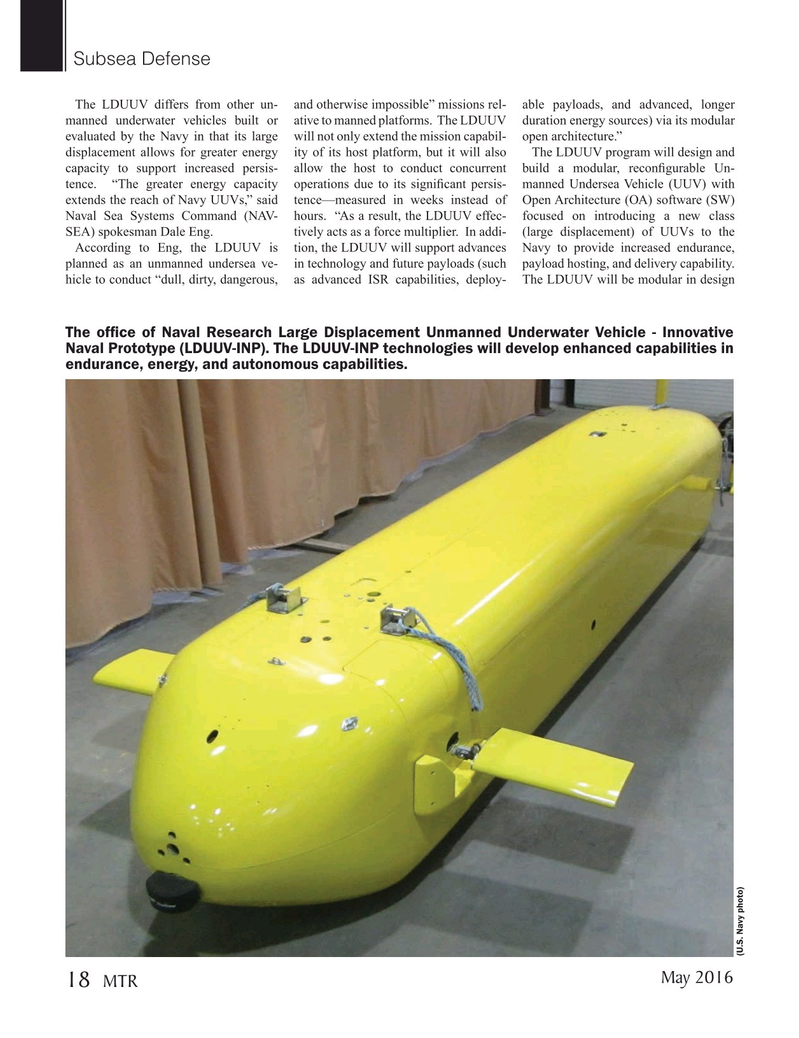
Page 18: of Marine Technology Magazine (May 2016)
Underwater Defense
Read this page in Pdf, Flash or Html5 edition of May 2016 Marine Technology Magazine
Subsea Defense
The LDUUV differs from other un- and otherwise impossible” missions rel- able payloads, and advanced, longer manned underwater vehicles built or ative to manned platforms. The LDUUV duration energy sources) via its modular evaluated by the Navy in that its large will not only extend the mission capabil- open architecture.” displacement allows for greater energy ity of its host platform, but it will also The LDUUV program will design and capacity to support increased persis- allow the host to conduct concurrent build a modular, recon? gurable Un- tence. “The greater energy capacity operations due to its signi? cant persis- manned Undersea Vehicle (UUV) with extends the reach of Navy UUVs,” said tence—measured in weeks instead of Open Architecture (OA) software (SW)
Naval Sea Systems Command (NAV- hours. “As a result, the LDUUV effec- focused on introducing a new class
SEA) spokesman Dale Eng. tively acts as a force multiplier. In addi- (large displacement) of UUVs to the
According to Eng, the LDUUV is tion, the LDUUV will support advances Navy to provide increased endurance, planned as an unmanned undersea ve- in technology and future payloads (such payload hosting, and delivery capability. hicle to conduct “dull, dirty, dangerous, as advanced ISR capabilities, deploy- The LDUUV will be modular in design
The of? ce of Naval Research Large Displacement Unmanned Underwater Vehicle - Innovative
Naval Prototype (LDUUV-INP). The LDUUV-INP technologies will develop enhanced capabilities in endurance, energy, and autonomous capabilities. (U.S. Navy photo)
May 2016 18
MTR
MTR #4 (18-33).indd 18 4/27/2016 10:07:48 AM

 17
17

 19
19
